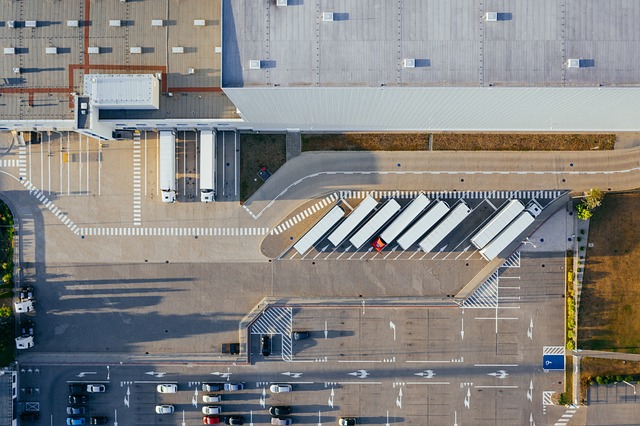Awnings and Overhangs for the United States
Awnings and overhangs are versatile additions that can transform the exterior of your home while providing practical benefits. These structures offer shade, protection from the elements, and enhanced curb appeal. Let's explore the world of awnings and overhangs to help you make an informed decision for your property.
What are the main types of awnings and overhangs available?
Awnings and overhangs come in various styles to suit different architectural designs and functional needs. The most common types include:
- Retractable awnings: These can be extended or retracted as needed, offering flexibility in sun protection.
- Fixed awnings: Permanently installed structures that provide constant shade and protection.
- Freestanding awnings: Standalone structures that can be placed anywhere in your outdoor space.
- Window awnings: Smaller awnings designed specifically for windows to reduce glare and heat gain.
- Door overhangs: Structures that protect entryways from rain and sun.
- Patio covers: Larger overhangs that create a sheltered outdoor living area.
Each type has its own set of advantages, and the best choice depends on your specific needs and home design.
How do awnings and overhangs benefit homeowners?
Awnings and overhangs offer numerous advantages for homeowners:
- Energy efficiency: By blocking direct sunlight, they can reduce indoor temperatures and lower cooling costs.
- UV protection: They shield outdoor areas and interior furnishings from harmful UV rays.
- Weather protection: These structures provide shelter from rain, snow, and wind for outdoor spaces and entryways.
- Increased usable space: Awnings and overhangs can transform outdoor areas into comfortable living spaces.
- Enhanced curb appeal: Well-designed awnings and overhangs can significantly improve a home’s exterior aesthetics.
- Increased property value: The added functionality and visual appeal can boost your home’s market value.
What materials are commonly used for awnings and overhangs?
The choice of material for your awning or overhang can impact its durability, maintenance requirements, and overall appearance. Common materials include:
- Fabric: Often used for retractable awnings, available in various colors and patterns.
- Metal: Aluminum and steel are popular for their durability and low maintenance.
- Wood: Offers a natural, rustic look but requires more upkeep.
- Vinyl: A low-maintenance option that resists fading and weathering.
- Polycarbonate: A lightweight, durable material that allows some light transmission.
- Fiberglass: Known for its strength and resistance to weather and UV rays.
Each material has its pros and cons, so consider factors like climate, budget, and desired aesthetics when making your choice.
How can awnings and overhangs be customized to suit your home?
Customization options for awnings and overhangs are extensive, allowing you to create a perfect match for your home’s style:
- Color and pattern: Choose from a wide range of fabric colors and patterns for awnings.
- Size and shape: Customize the dimensions to fit your specific windows, doors, or outdoor spaces.
- Motorization: Add remote-controlled motors to retractable awnings for convenience.
- Lighting: Incorporate LED lights for ambiance and functionality in the evening.
- Sensors: Install wind and sun sensors for automatic operation of retractable awnings.
- Decorative elements: Add valances, side panels, or decorative brackets for a unique look.
What are some interesting facts about awnings and overhangs?
Awnings and overhangs have a rich history and offer surprising benefits:
- Ancient origins: Awnings date back to ancient Egypt and Syria, where they were used to shade market stalls.
- Energy savings: The U.S. Department of Energy reports that awnings can reduce solar heat gain by up to 77% on west-facing windows.
- Versatility: Awnings are used not just on homes but also on boats, RVs, and commercial buildings.
- Longevity: Well-maintained fabric awnings can last 8-12 years, while metal awnings can last 20-30 years.
- Temperature control: Awnings can lower the temperature of a patio or deck by up to 20 degrees Fahrenheit.
- Historical significance: In the 19th century, awnings became popular in American cities as a way to cool buildings before air conditioning.
What are the cost considerations for installing awnings and overhangs?
The cost of awnings and overhangs can vary widely depending on the type, size, material, and customization options. Here’s a general overview of pricing for different types:
| Type of Awning/Overhang | Average Cost Range | Key Factors Affecting Price |
|---|---|---|
| Retractable Fabric Awning | $2,000 - $3,500 | Size, fabric quality, motorization |
| Fixed Metal Awning | $700 - $1,500 | Size, material (aluminum vs. steel) |
| Window Awning | $250 - $800 per window | Size, material, style |
| Door Overhang | $500 - $2,500 | Size, material, design complexity |
| Patio Cover | $3,000 - $10,000+ | Size, material, built-in features |
Prices, rates, or cost estimates mentioned in this article are based on the latest available information but may change over time. Independent research is advised before making financial decisions.
When budgeting for awnings or overhangs, consider additional costs such as installation, permits (if required), and ongoing maintenance. While the initial investment may seem significant, the long-term benefits in energy savings, increased outdoor living space, and enhanced property value can make it a worthwhile addition to your home.
In conclusion, awnings and overhangs offer a blend of functionality and style that can significantly enhance your home’s exterior. By understanding the various options, materials, and customization possibilities, you can choose the perfect awning or overhang to complement your home’s architecture and meet your specific needs.
The shared information of this article is up-to-date as of the publishing date. For more up-to-date information, please conduct your own research.







